Bonneville
3D Vintage Convertible Car
Project Overview
This particular project is part of the Model for Visual Effects assignment at Savannah College of Art and Design. The primary objective of this project is to challenge students to create a lifelike model that accurately reflects shapes, forms, materials, and lighting. To begin the project, I searched for a reference image and ultimately decided to model a 1957 Pontiac Bonneville Convertible due to its simple yet captivating design. The project required a complete modeling process, including shading, texturing, lighting, and rendering.
Role: Model, Texture, Lookdev, and Lighting
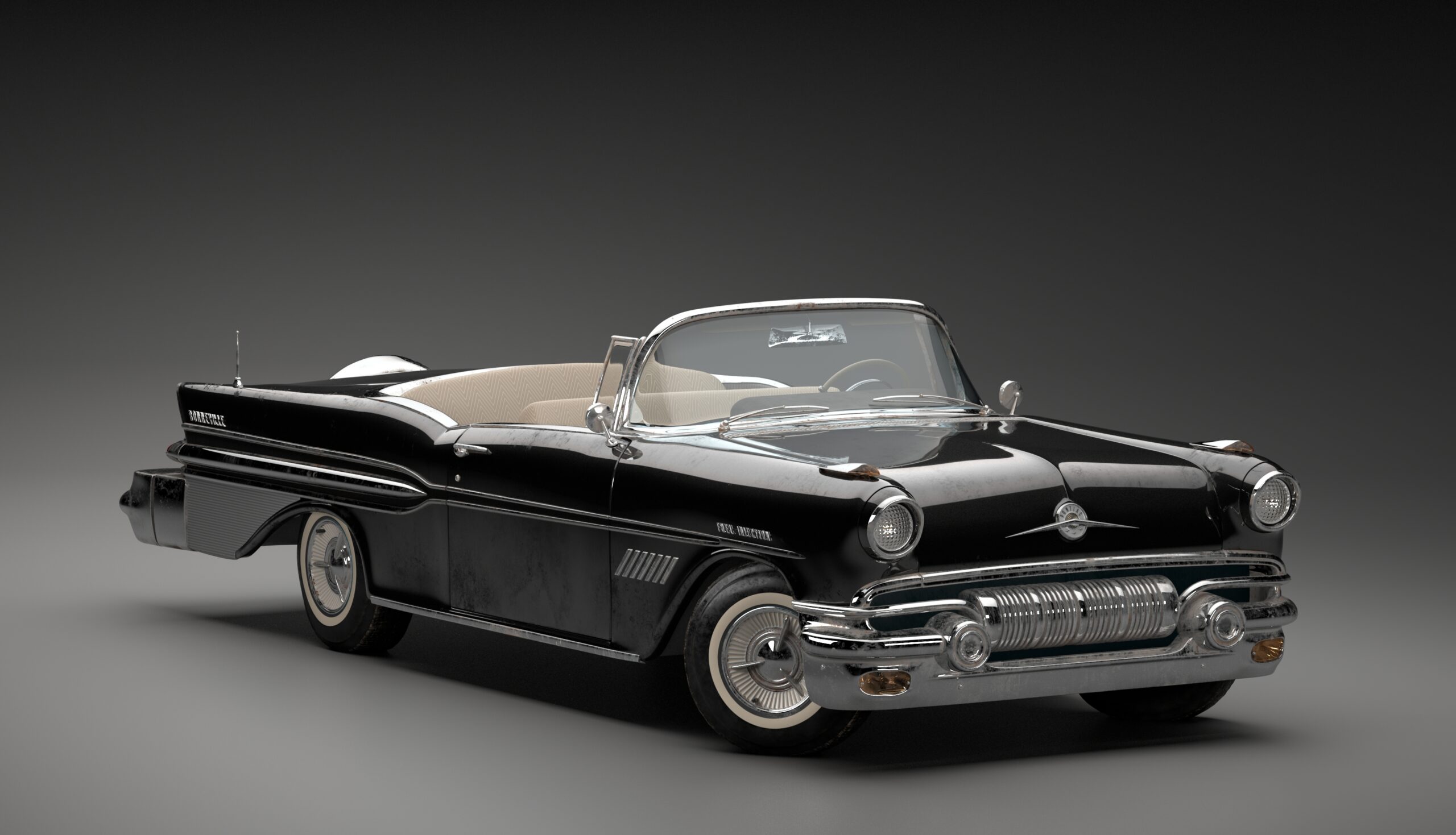
Modeling
To create the model, I import reference images into Maya and use them as visual cues for the car’s shape and structure. Due to the difficulty in finding an appropriate blueprint, I make a preliminary version of the model from scratch using the real car’s dimensions. This approach provides creative control and a deeper understanding of the car’s design.
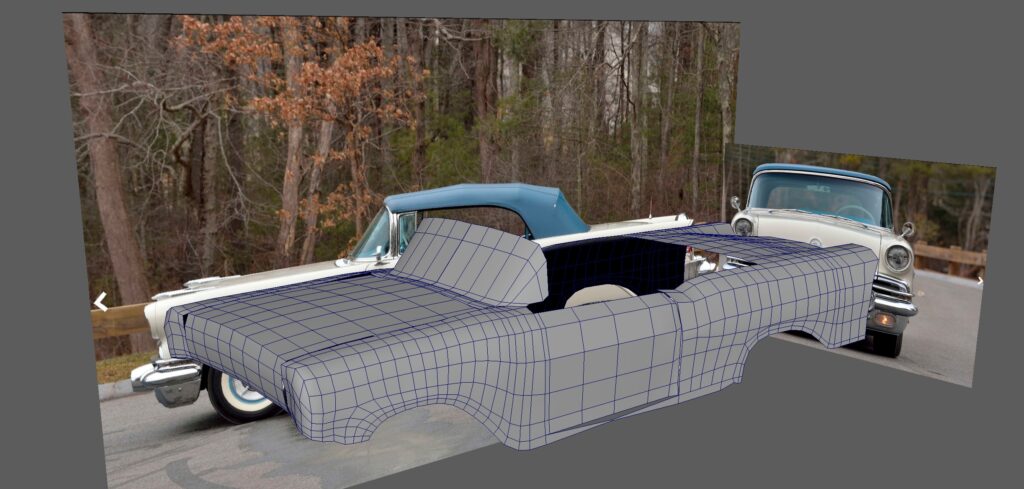


Texturing
When creating the texture for the car’s surface, I took inspiration from the initial reference, which featured a cream and blue color scheme. I felt that this color combination was suitable for the car, so I decided to incorporate it into my texture design.
Using Substance Painter, I carefully crafted the texture to ensure that it was both visually appealing and accurate to the car’s appearance. I made sure to include subtle variations in color and texture to give the surface a realistic and natural feel.
To add character to the texture and give it a more lived-in look, I decided to add scratches and rust to the surface. The scratches were placed in areas where the car might have experienced wear and tear, such as the edges of the doors or the bumper. Meanwhile, the rust was added in places where metal might have been exposed to the elements, such as around the wheel wells or along the undercarriage.
By combining these elements, I was able to create a texture that was both aesthetically pleasing and true to the car’s design. The cream-blue color scheme and the addition of scratches and rust helped to give the car an aged but well-maintained appearance, while the texture itself added depth and dimension to the model. Overall, I am pleased with the result and believe that it adds an extra layer of realism and authenticity to the final product.
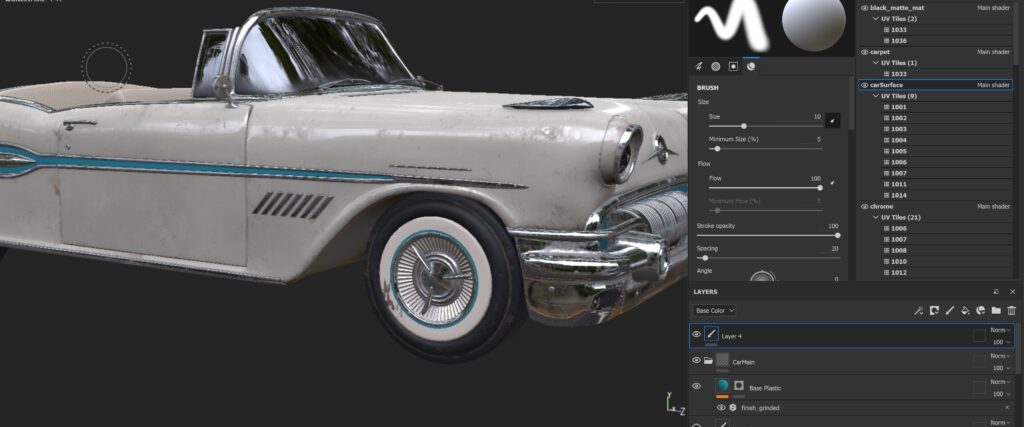
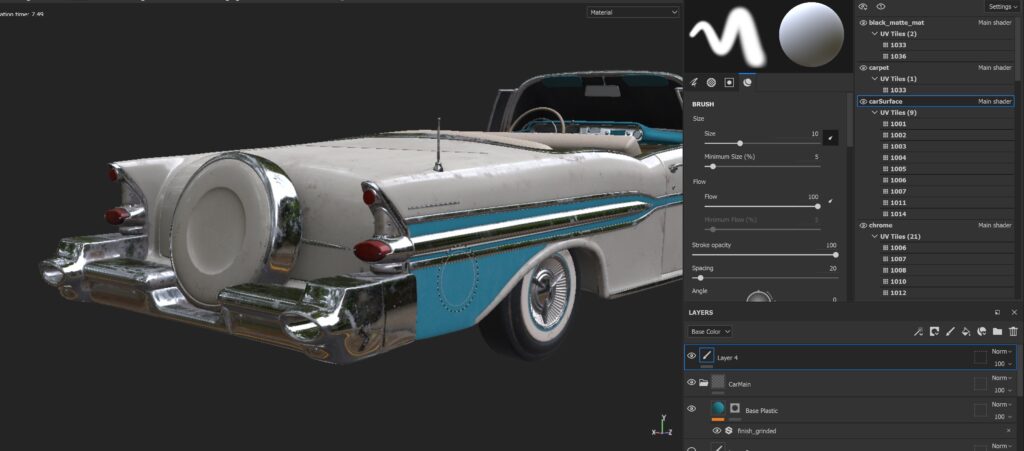
Shading
For this project, I utilized the Arnold Renderer to produce high-quality images. The AiStandardSurface shader was a critical component in achieving an authentic and realistic visual outcome. Its versatility proved to be an asset throughout the production process, allowing me to fine-tune the appearance of various surfaces and balance their roughness and glossiness.
The AiStandardSurface shader consistently delivered excellent results, enabling me to bring my creative vision to life. Its ability to simulate different surface behaviors and adjust parameters to achieve the desired effect was particularly impressive.
The final images produced using Arnold Renderer and the AiStandardSurface shader exceeded my expectations in terms of quality, attention to detail, and realism. In the post-production phase, I simply adjusted the color to black and minimized the dirtiness to achieve the desired effect. I am excited to utilize these powerful tools in future projects.
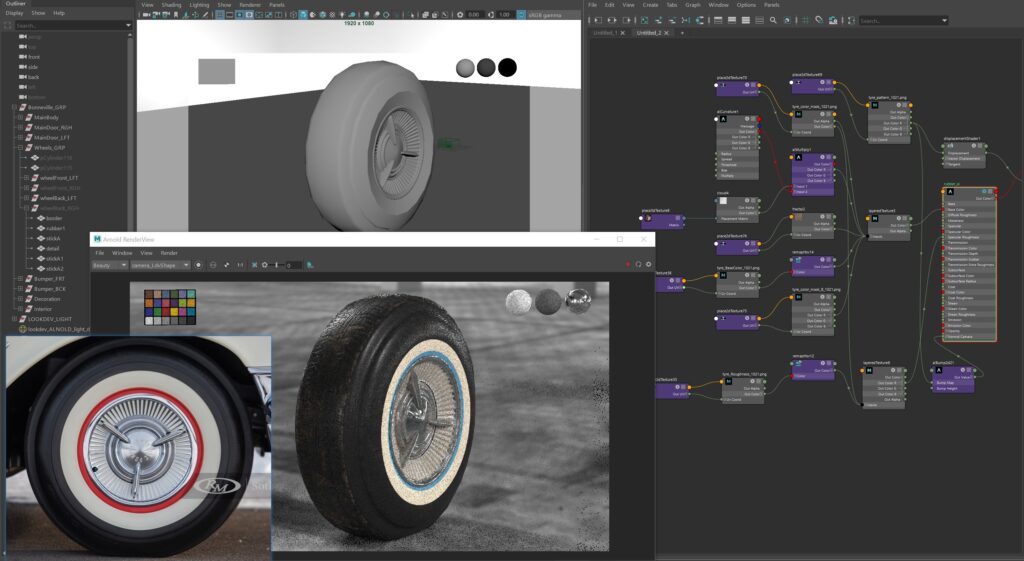
Lighting
When it came to the lighting aspect of the project, I began by incorporating HDRI lighting in combination with three area lights. This was because I needed to achieve even reflection on the surface of the car and create soft shadows, and area lighting proved to be an effective way to achieve this desired effect. Through the use of this lighting setup, I was able to create a visually appealing and well-balanced scene that effectively highlighted the car’s shape and features.
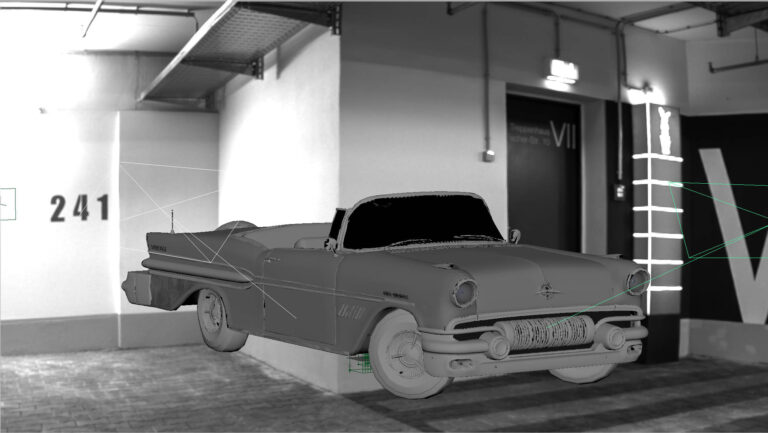
Conclusion
As part of my learning process, I acquired the skill of modeling to scale and strategically planning the direction of light to highlight the form of a car. By implementing these techniques, I was able to effectively convey the shape of the car and produce visually compelling models.